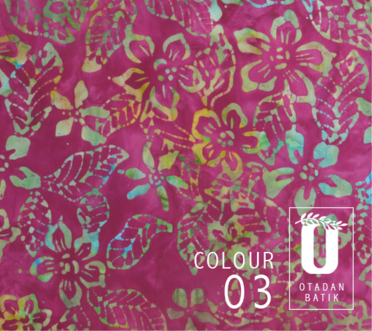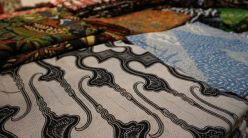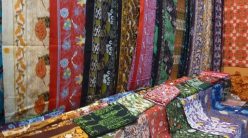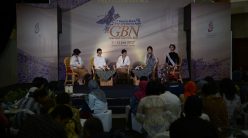Batik tiga negeri is batik that has three colors, including red, blue, and sogan (yellowish brown). In Lasem, Rembang Regency, Central Java, batik tiga negeri has been exist for hundreds of years. At that time, batik tiga negeri used noni root for red, indigofera leaves for blue, and tegeran wood for brown.
Although it has existed since the time of Majapahit Kingdom, batik activities in Indonesia only developed rapidly in 18th century or 1700s along with the import of cotton fabrics from India and England to the Dutch East Indies to meet the needs of cloth around 1705. At that time, Chintz batik motifs from India entered Indonesia and became the consumption of the upper class of Dutch East Indies.
The red and blue patterned fabric is made using the kalamkari technique or incised color with calligraphy pen on a cloth that has been mordaned. Meanwhile, the mordant or mordanting technique is a process of mixing water with several substances to brighten the fabric and make it easier for the color to be attached to the fabric.
The batik tiga negeri in Lasem is closely related to the legend of Bi Nang Un and Na Lini who settled in Lasem. They were a husband and wife member of the expedition of Admiral Zheng He in 1405–1433 who settled in Lasem. It was the husband and wife who introduced the technique of batik in 15th century in Lasem. At the same time as batik techniques are booming in Indonesia, a number of Lasem people are becoming more and more active in making batik. In the 19th and 20th centuries, Lasem was called the futuristic City of Batik. The batik tiga negeri is made communally by the Chinese. The motifs are a combination of Chinese, Javanese, European, Indian and Persian. The red color called chicken blood in Chinese society means happiness. Red is the basic color for the three countries batik.
Batik tiga negeri has quite a lot of motif variants produced by a number of batik houses in Lasem. One of them is the ringgit mountain motif which has a philosophy related to one’s finances. This motif philosophy is that if the one who wears the cloth, the money will be as high as a mountain. There is also sandy cloth with the meaning that the person who wears it will have sustenance like beach sand or it will never run out. There is also a sponge motif, a symbol of strength.
The batik motifs in Lasem are identical to the local culture that exists here. There are kawung roundabouts, kawung suketan, and so on. Kawung is a batik motif that has the shape of kawung fruit, a type of coconut or fro. In addition to the kawung motif, there is also tamarind leaf motif from the tamarind tree, once part of the Majapahit Kingdom, which can be seen there until now. There is another latohan motif. Latoh is seaweed which is now famous for its culinary urap latoh.
–sh





